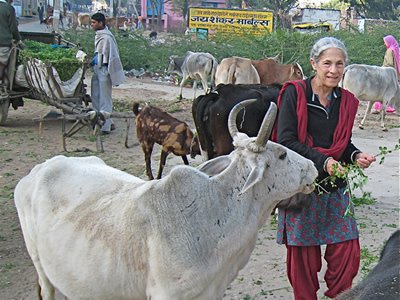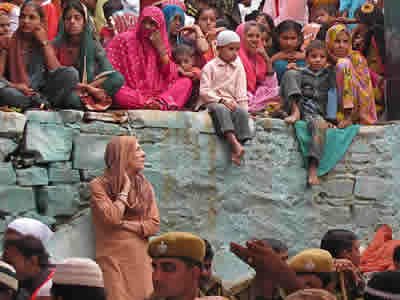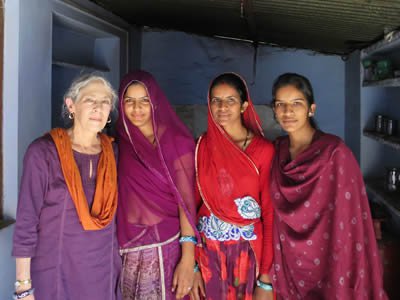Shiptown: North Indian Lives Between Rural and Urban
New religion chair Ann Grodzins Gold writes ethnographic study of North Indian market town

After spending the past year on academic leave, Ann Grodzins Gold has come home—specifically, to chair the religion department in the College of Arts and Sciences (A&S).
An expert on South Asian religions, Gold is dually appointed to A&S and the Maxwell School of Citizenship and Public Affairs, where she serves as the Thomas J. Watson Professor of Religion and professor of anthropology, respectively. Gold has spent much of the past year at the National Humanities Center (NHC) near Durham, N.C., working on her book manuscript, Shiptown: North Indian Lives
Between Rural and Urban. Her year of writing was also supported by an award from the Guggenheim Foundation. Shiptown is an ethnographic account of 11 months in Jahazpur, a market town in the North Indian state of Rajasthan. The project focuses on place and identity, and treats issues of gender, ecology, religious pluralism, and changes in India's social hierarchy.
While the NHC is an independent entity, it draws on resources from nearby Duke University, North Carolina State University, and The University of North Carolina at Chapel Hill. “It’s a scholar’s paradise,” says Gold, describing the center. “It’s a place where they truly revere books. Anything you request magically appears within two to three days. For a scholar, that’s a luxury.”
Among the NHC’s 40-some Fellows, Gold was the only anthropologist, as well as the only scholar working on a project in India. She greatly appreciated the chance for sustained interaction with a genuinely interdisciplinary community of scholars, noting that "We all ate lunch together every day—the main requirement for Fellows."

Gold received a Fulbright-Hays Faculty Research Abroad Fellowship, enabling her to live in Jahazpur during the 2010-11 academic year. Previously, she had done fieldwork in the nearby village of Ghatiyali. Gold describes Jahazpur as a qasba, or “casbah”—smaller than a city, but larger than a village—located in Bhilwara District. “You can walk from one side of the qasba to the other in 15 minutes,” she says, adding that Jahazpur is home to nearly 21,000 people; its population includes Hindus, Muslims, and Jains. The qasba was once totally walled, to protect the market area from thieves and wild animals. Until 1947, the town gates were locked at night. “Now the walls’ ruins are used to post slogans or are incorporated into newer construction," she adds.
Gold and her husband, Daniel, an Asian studies professor at Cornell University, lived in a flat directly above their landlord's home. “Our living room had a grate that looked down to their kitchen,” she says. “We could hear one another and smell one another's cooking.”
The landlord's divorced daughter and her two children, a boy and a girl—ages six and seven, respectively—lived there, too. The children affectionately called the Golds “Auntie-ji” and “Uncle-ji.”

Much of Gold’s time in Jahazpur was spent observing daily life and rituals, including religious celebrations. She says she appreciates Jahazpur as a place where religious pluralism flourishes, and where members of business communities, no matter what their religious views, express a strong interest in keeping the peace.
Bhoju Ram Gujar, Gold's associate and close friend since 1980, was an active collaborator in the Jahazpur research, helping facilitate interviews. In Jahazpur, his daughters also learned to be research assistants. They introduced Gold to neighborhood women and to their college classmates.
Gold is excited to be back on campus, where, in addition to chairing the religion department, she is teaching a fall graduate seminar titled “Writing Religions and Cultures: Ethnographic Practice” (REL/ANT 699). “We look at how ethnographic field work is transformed into evocative writing." She adds, “It’s the perfect thing for me to be teaching right now.”
